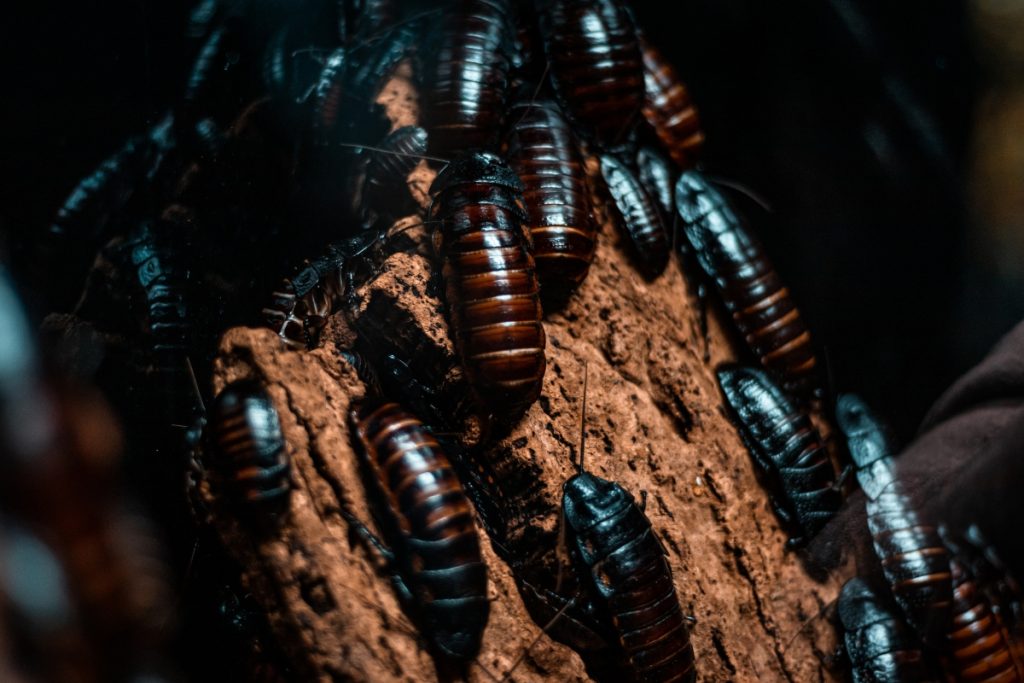Where Do Cockroaches Go In Winter?
As temperatures drop and winter sets in, many creatures adapt to the chilly environment. Among these creatures are cockroaches, pests often associated with warm and damp conditions. But where do cockroaches go in winter?
Let’s dig into their behaviours and discover their strategies for survival during the colder months.

How Do Cockroaches Cope During Winter Months?
Shelter
Cockroaches often find warm refuge indoors in wall cracks, cupboards, pipes, sinks and floor cavities. These spaces’ narrow and confined nature mimics the crevices and nooks they would seek in their natural habitat, offering protection from predators and the elements.
Survive without Food
Cockroaches seek shelter near food, but they are not fussy eaters. They can feed on diverse organic materials, from decaying matter to paper. They can store food reserves with a slowed metabolic rate, allowing them to endure weeks or even months without regular sustenance.
Group Together
Cockroaches gather in large groups for collective warmth, creating a slightly warmer microenvironment. This huddling insulates them from the cold. These groups also increase humidity in concealed spaces, preventing dehydration and enhancing survival during colder months.
Signs of Cockroach Infestation
Faeces
Cockroach droppings can resemble ground coffee or black pepper with varying sizes depending on the cockroach type. Consistent discovery of these droppings, especially in kitchen cabinets, behind appliances or pantries, signals an active infestation.
Shed Skin
As cockroaches grow, they undergo moulting, where they shed their exoskeleton. Their shed skin can be found behind furniture or in corners of a room. The frequency of these moults can indicate the population size of the infestation.
Musty Odour
A peculiar, musty smell is a significant sign that you have a cockroach infestation. This odour intensifies with the more cockroaches hiding in your home.
Dead Cockroaches
Finding dead cockroaches indicates that a living population exists in your home. Frequently finding dead cockroaches should prompt you to take immediate action.
How Does This Affect Homeowners?
Cause Allergies
Components of cockroach droppings, skin sheds and body parts can irritate the respiratory system, leading to cold-like symptoms. Cockroach allergens can lead to various allergic reactions, from sneezing and itching to eczema. A cockroach allergy has been linked to asthma, especially in children.
Salmonella
Cockroaches are known carriers of various pathogens, including salmonella. When they meet food or food preparation areas, there’s a risk of contamination, which can lead to food poisoning
How to stop Cockroaches Getting into the Home
Clean
Eliminate any food sources and reduce clutter. Regularly wipe down surfaces, hover and mop floors, clean up food spills and ensure all food items in cupboards are stored in sealed containers.
Empty Bins Regularly
Empty bins frequently, especially those with organic food scraps, and ensure all are well-sealed with a bin liner inside.
Seal Entry Points
When asking yourself: where do cockroaches go in winter? Conduct a thorough check of your home’s exterior and interior for potential entry points. Once any are identified, seal them with appropriate materials. Pay specific attention to areas around windows, doors, pipes and utility lines.
Fix Leaks
Inspect kitchens, utility, basement and bathrooms for potential leaks. Promptly fix any leaks in your home, whether from faucets or pipes.
A dry environment and other preventive measures can significantly reduce the likelihood of a cockroach infestation.
Contact a Professional
When faced with a cockroach infestation, contact a professional pest control company specialising in cockroach control. These specialists have the training, tools and techniques tailored to handle cockroaches effectively and safely. They not only address the immediate infestation but also assess and rectify potential entry points and attraction sources, preventing the risk of repeated infestation.
